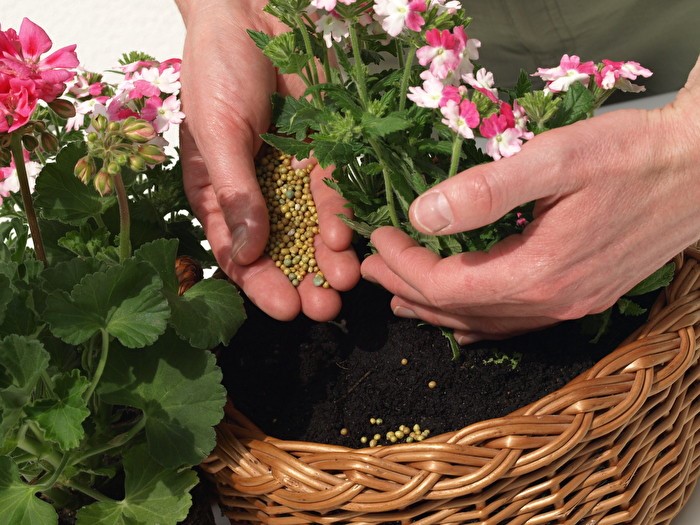
Regular feeding is an important part of growing indoor plants at home. The proper use of high-quality nitrogen fertilizers increases the chances of growing healthy crops. Nitrogen Fertilizers provide the required nutrition, which is the key to the full development of growth.
Content
Nitrogen production
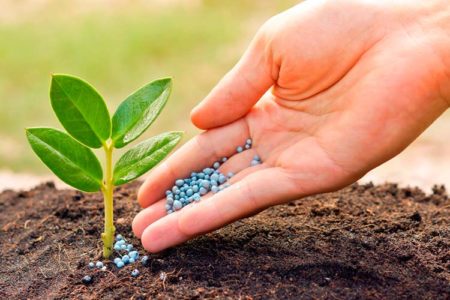
The production process is based on the use of dry raw materials - ammonia obtained from coke. Enterprises for the production of mineral constituents are always located close to metallurgical enterprises.
Now the ammonia production process has changed, because natural gas is the raw material instead of coke. For the production of fertilizer, waste is used that is obtained in the process of refining petroleum products, because plants with nitrogen fertilizers are located near gas pipelines.
The technology of the production process is complex, but the basic nuances are clear to the average person:
- a burning coke generator allows air to flow through;
- in the course of the formation of nitrogen, which is mixed with hydrogen;
- the starting product of the manufacturing process is ammonia.
The production of nitrate from ammonia is based on the process of neutralizing nitrous acid. To obtain urea, the interaction of carbon dioxide and ammonia is necessary under the influence of the necessary temperatures and pressures. Ammonium nitrate can be obtained by passing ammonia gas through an acid solution.
What fertilizers are used for indoor floriculture
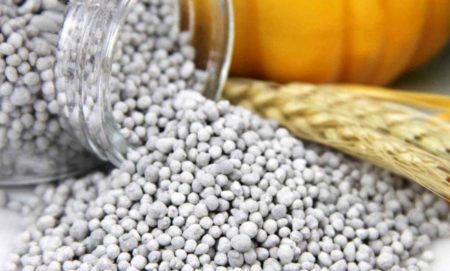
Among the list of nitrogen-based fertilizers used in indoor floriculture, the following items are distinguished:
- ammonium nitrate - has a high mass fraction of nitrogen, is used as the main food and works well in conditions of lack of moisture, has a long shelf life;
- urea - contains about 48% nitrogen, unsuitable for root nutrition and works in combination with fertilizers of the organic spectrum;
- calcium nitrate - unsuitable for fertilizing chernozem;
- ammonium sulfate is the optimal solution for regular top dressing of domestic plants; it is stored in the soil for a long time.
Experienced gardeners do not recommend the use of such a composition as ammonium chloride - this substance is dangerous for plants.
Full fertilizer is selected depending on the requirements of the plant.
Home use
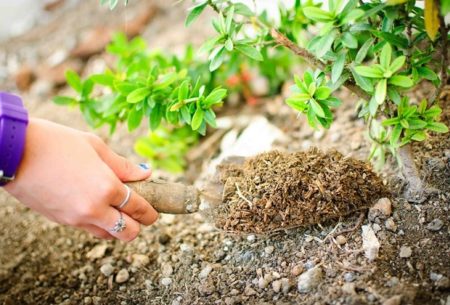
For use in indoor floriculture, it is better to choose liquid forms of nitrogen nutrition. This format allows you to combine fertilizing with watering and provides an accurate calculation of the rate of the substance per liter of water used.
The high nitrogen content in the composition ensures the rapid growth of home and garden crops. The substance has a positive effect on the condition of the leaves and stems of the plant. An excess of the mineral component is dangerous and often causes a slowdown in growth, refusal to bloom, late ripening of the crop and death of the plant. Nitrogen fertilizers are recommended for use in spring - during a period of rapid growth. In winter, top dressing is used in limited quantities.
Nitrogen fertilizers can be used in vegetable growing. The compositions are used for pre-sowing processing of planting material and to provide nutrition during a period of rapid growth. Fruit and berry trees and shrubs are fed 5-6 days after flowering is completed.
Important points
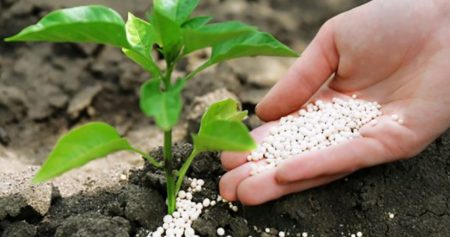
Fertilizers containing nitrogen must be used carefully, following the rules described by the manufacturer.
Basic rules to ensure safe operation:
- fertilizer is applied in small doses, but regular;
- only healthy plants are fed;
- the flower is watered along the edge of the pot; it is important not to fill the base of the plant.
It is necessary to work with a nitrogen-containing compound in compliance with safety rules, because the product emits substances harmful to humans and with prolonged contact can provoke allergic reactions. To ensure reliable protection, it is sufficient to use gloves and a respirator.




 Sow in the ground, without seedlings: 10 beautiful and unpretentious flowers
Sow in the ground, without seedlings: 10 beautiful and unpretentious flowers Platicodon planting and outdoor care
Platicodon planting and outdoor care Hosta - planting and care in the open ground in the Urals
Hosta - planting and care in the open ground in the Urals Oleander - care and growing at home
Oleander - care and growing at home